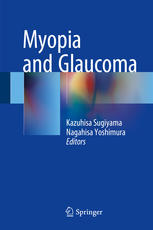Myopia and Glaucoma 2015
دانلود کتاب پزشکی نزدیک بینی و گلوکوم
| نویسنده |
Kazuhisa Sugiyama, Nagahisa Yoshimura |
|---|
| تعداد صفحهها |
113 |
|---|---|
| نوع فایل |
|
| حجم |
4 Mb |
| سال انتشار |
2015 |
89,000 تومان
این کتاب به عنوان یک مرجع مقدماتی برای جنبه های بالینی گلوکوم و نزدیک بینی عمل می کند و دستورالعمل های ضروری برای تشخیص و نظارت بر پیشرفت آب سیاه در بیماران، به ویژه آنهایی که نزدیک بینی بالا دارند، ارائه می دهد. مطالعات بالینی متعدد توسط متخصصان برجسته در این زمینه به سبکی در دسترس ارائه شده است که محتوا را نه تنها برای چشم پزشکان، بلکه برای اپتومتریست ها و ارتوپتیک ها و همچنین برای دانشجویان مناسب می کند.
رابطه بین نزدیک بینی و گلوکوم موضوع بسیاری از آزمایشات بالینی و مطالعات جمعیتی بوده است. بیشتر داده ها حاکی از آن است که نزدیک بینی متوسط تا زیاد با افزایش خطر ابتلا به گلوکوم با زاویه باز اولیه، گلوکوم با فشار طبیعی و فشار خون چشمی همراه است. عوامل زیادی در تشخیص آب سیاه نقش دارند، اما تعیین وجود گلوکوم در چشمهای نزدیکبین اغلب دشوار است.
چشم کوته بین، به ویژه در موارد نزدیک بینی متوسط تا زیاد، تمایل به نزدیک بینی دارد. شبکیه و مشیمیه نازک شده و نازکتر از حد طبیعی به نظر می رسند. حتی با تکنیکهای جدید تصویربرداری با حساسیت و ویژگی بهبود یافته برای تشخیص گلوکوم، هر تکنیک چالشهایی را هنگام ارزیابی نزدیکبینی ایجاد میکند.
این کتاب مروری بر این چالش های تشخیصی با اشاره به شیوع و شدت فزاینده نزدیک بینی در نقاط مختلف جهان ارائه می دهد که در آن گزارش های عملی و مطالعات بالینی ارزشمند بسیاری توسط نویسندگان معتبر ارائه شده است. این دانش به از بین بردن ناحیه مبهم بین نزدیک بینی بالا و گلوکوم که پزشکان با آن مواجه هستند کمک می کند.
This book serves as an introductory reference on clinical aspects of glaucoma and myopia, providing essential guidelines for diagnosis and monitoring of glaucoma progression in patients, especially those with high myopias. Many clinical studies are presented by leading experts in the field in an accessible style, making the content suitable not only for ophthalmologists but also for optometrists and certified orthoptists as well as for students.
The relation between myopia and glaucoma has been the subject of many clinical trials and population-based studies. Most of the data has suggested that moderate to high myopia is associated with increased risk of primary open-angle glaucoma, normal tension glaucoma, and ocular hypertension. There are several factors involved in the diagnosis of glaucoma, but it is often difficult to determine the presence of glaucoma in myopic eyes.
A myopic eye, especially in cases of moderate to high myopia, tends to have a thin retina and choroid and to appear thinner than normal. Even with new imaging technologies with improved sensitivity and specificity for detecting glaucoma, each technology presents some challenges when assessing myopic eyes.
This book furnishes an overview of these diagnostic challenges with reference to the growing prevalence and severity of myopia in various parts of the world, providing many valuable hands-on reports and clinical studies by authoritative authors. This knowledge will help to do away with the vague area between high myopia and glaucoma faced by clinicians.




